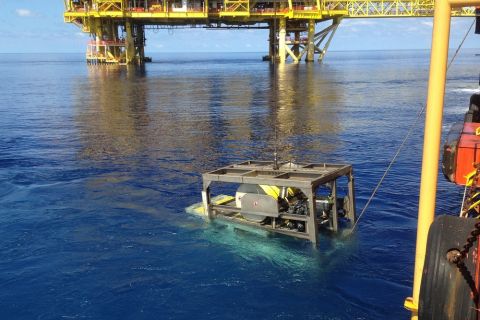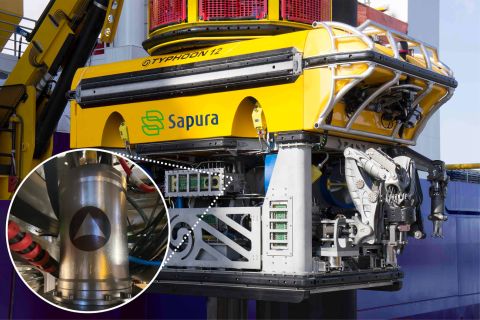The race to build liquefied natural gas import terminals in Baja California has intensified, now that the Mexican government has released its official regulations for the construction and operation of such facilities. Several companies believe the northwestern Mexico area is a prime location for an LNG terminal because it would allow LNG to enter the energy-hungry U.S. West Coast while avoiding the regulatory nightmare that a terminal would encounter in the state of California. Baja sites also would be able to serve gas markets in Mexico, where imports are needed as well. U.S. companies interested in Baja have been stymied by a lack of federal regulations in Mexico. In August, however, Mexico's Energy Ministry published its safety guidelines for construction and operation of LNG plants. Energy executives can now present their plans to Mexican officials. "We're very pleased with the response of the Mexican government to the requirements that would allow terminal construction to go forward. We see them being very supportive of LNG in this country," said Kathleen Eisbrenner, chief commercial officer for El Paso Global LNG. The company hopes to build three new land-based terminals to serve the U.S. market, one of which would be in Baja. However, Eisbrenner acknowledges that the Baja terminal faces more competition than the other two potential sites that El Paso is eyeing in the Bahamas and in Altamira, Mexico. Some of El Paso's competition comes from Shell Gas & Power, which hopes to develop a new Baja LNG regasification terminal that would come onstream in 2006. The terminal-with a send-out capacity of up to 1.3 billion cubic feet per day-would feed power plants and other potential customers in Baja and sell surplus gas into the Southern Californian market. Shell has contracted an initial supply of 7.5 million tons per year of LNG from projects in the Asia-Pacific region. Also, Marathon Oil Corp. and partners Pertamina, Golar LNG Ltd. and Grupo GGS SA, plan a major LNG regasification and power generation complex in Baja. With a potential start-up in 2005, the complex would have the capacity to regasify up to 1 Bcf a day of LNG for local use as well as export to Southern California. Located south of Tijuana, the complex would consist of the LNG facilities, a 20 million-gallon per day water desalinization facility and a 1,000-megawatt gas-fired power generation plant. Electricity from the plant would be offered for use in Mexico and Southern California. Pertamina, the state-owned oil company of Indonesia, is expected to be a key supplier of the LNG. The group has submitted its application for the energy center to the Mexican government. Meanwhile, Sempra Energy and CMS Energy plan to ship LNG from land-locked Bolivia to Southern California and Mexico via a receiving terminal in Baja. The joint venture would develop, finance, build and own the LNG facility and related port infrastructure, located on the Pacific Coast north of Ensenada in Baja California. The plant would have a send-out capacity of approximately 1 Bcf a day of gas, which would flow north into Baja California and the southwestern U.S. via a new 40-mile pipeline connecting to existing lines. The target start-up date for the Baja plant is 2006. Sempra planned to file its application with the Mexican regulatory commission sometime last month. Executives betting on an LNG strategy believe that while traditional sources of U.S. gas are plagued by decline rates, demand for the clean-burning fuel will keep growing, and LNG will help fill the void. Currently, the fuel satiates less than 2% of U.S. gas demand; some market observers believe the figure will more than double by the end of the decade. The U.S. currently has four LNG receiving terminals-in Massachusetts, Louisiana, Georgia and Maryland. "There are probably about 14 (new terminal) sites being discussed, and it would probably not be surprising to see about half of them [developed] during the next 10 years," said Thomas Woods, vice president for U.S. Gas Services at Ziff Energy Group in Houston. In addition to Baja California, companies are eyeing the U.S. Gulf Coast for terminals, and El Paso is developing a floating LNG system that could deliver the fuel to the East, West or Gulf coasts.
Recommended Reading
Tech Trends: Autonomous Drone Aims to Disrupt Subsea Inspection
2024-01-30 - The partners in the project are working to usher in a new era of inspection efficiencies.
2023-2025 Subsea Tieback Round-Up
2024-02-06 - Here's a look at subsea tieback projects across the globe. The first in a two-part series, this report highlights some of the subsea tiebacks scheduled to be online by 2025.
Subsea Tieback Round-Up, 2026 and Beyond
2024-02-13 - The second in a two-part series, this report on subsea tiebacks looks at some of the projects around the world scheduled to come online in 2026 or later.
Forum Energy Signs MOU to Develop Electric ROV Thrusters
2024-03-13 - The electric thrusters for ROV systems will undergo extensive tests by Forum Energy Technologies and SAFEEN Survey & Subsea Services.
Sapura Acquires Exail Rovins’ Nano Inertial Navigation System
2024-02-01 - Exail Rovins’ Nano Inertial Navigation System is designed to enhance Sapura’s subsea installment capabilities.





